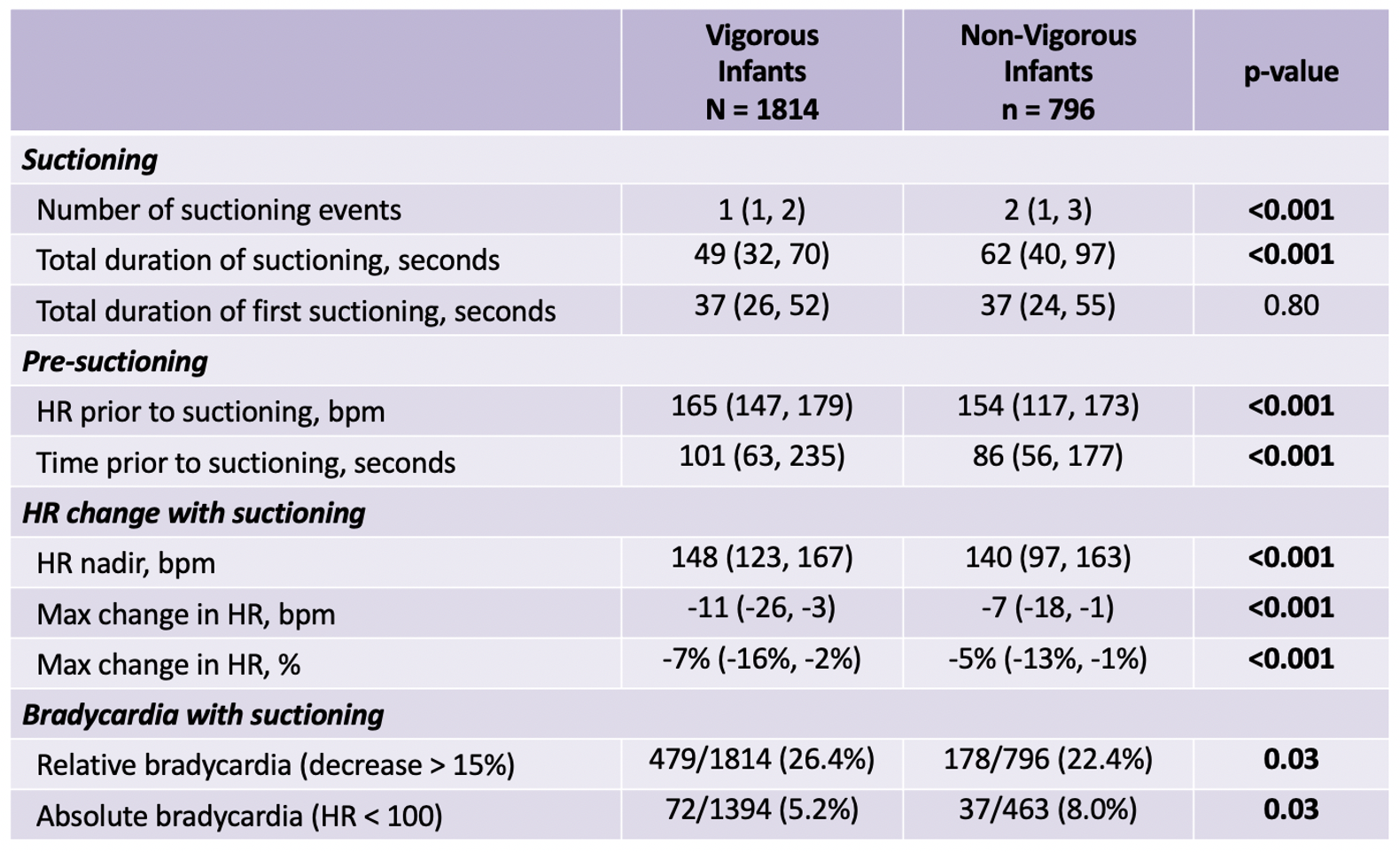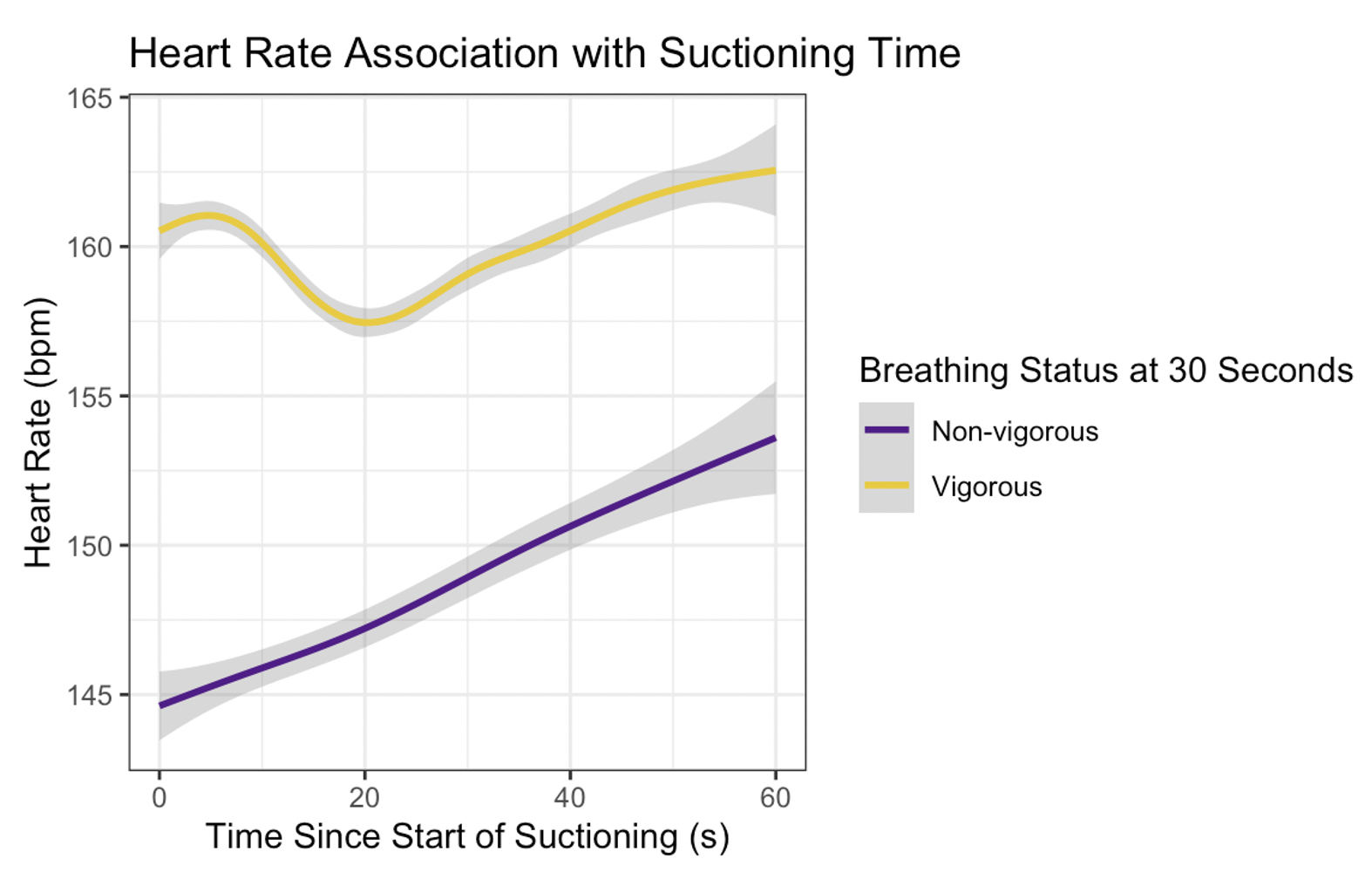Neonatology
Session: Neonatal/Infant Resuscitation 2
281 - Impact of Prolonged Oral Suctioning on Heart Rate in Vigorous and Non-Vigorous Infants
Monday, May 6, 2024
9:30 AM - 11:30 AM ET
Poster Number: 281
Publication Number: 281.2921
Publication Number: 281.2921

Olivia C. Brandon, BS (she/her/hers)
Research Scientist
University of Washington School of Medicine
Seattle, Washington, United States
Presenting Author(s)
Background: Excess oral suctioning occurs during newborn resuscitation in global health settings despite recommendations for brief use only when the airway is obstructed. The impact of prolonged suctioning as occurs clinically in vigorous and non-vigorous infants remains poorly defined.
Objective: Determine if vigorous infants are at comparable odds of bradycardia with prolonged suctioning as non-vigorous infants.
Determine if odds of bradycardia associated with suctioning increases with duration of suctioning.
Design/Methods: Data from 5,192 directly-observed deliveries occurring in 3 tertiary hospitals in the Democratic Republic of Congo was used. Respiratory status, timing and duration of resuscitation events were recorded by research personnel and synchronized with continuous heart rate (HR) data. Change in HR with the first episode of suctioning relative to HR prior to suctioning were determined. Relative bradycardia was defined as drop of HR by >15%. Absolute bradycardia was defined as drop of HR to < 100bpm. Infants documented as breathing well at 30 seconds were classified as vigorous. Maternal and neonatal demographics and outcomes were abstracted from the delivery registry. Linear and logistic regression models were used with to assess the association between bradycardia and suctioning.
Results: Of 5,192 infants, 3,373 were suctioned with comparable duration of first suction in both vigorous and non-vigorous infants. 2,610 babies with complete HR information and breathing status at 30 seconds were included. Vigorous infants had increased rates of relative bradycardia while non-vigorous infants experienced more absolute bradycardia (Table 1). In non-vigorous babies, HR tended to increase as suctioning duration increased while vigorous babies, on average, experienced a decrease in HR shortly after suctioning began (Fig 1). With logistic regression analysis, every additional 10 seconds of suctioning increased the odds of relative bradycardia by 9% (aOR 1.09, 95% CI 1.05, 1.13) while vigorous status was associated with 26% increased odds (aOR 1.26, 95% CI 1.04, 1.54). Factors associated with relative bradycardia during suctioning included lower pre-suctioning HR and length of suctioning while birth weight, gestational age, 1-minute APGAR and sex did not.
Conclusion(s): Detailed observations of over 2,610 infants suggest that every additional 10 seconds of suctioning increases odds of relative bradycardia by ~10%. Vigorous infants are at increased odds of relative bradycardia despite their breathing well prior to suctioning. Education and clinical guidance need to be tailored towards overuse of suctioning.


